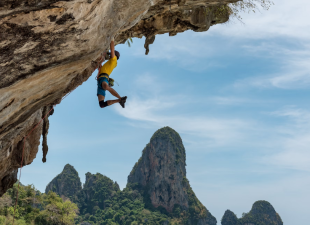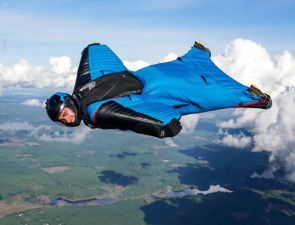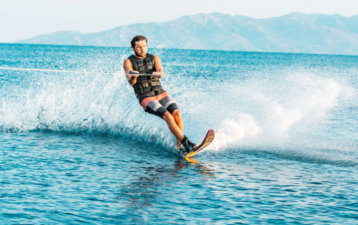What are extreme sports?
Extreme sports are those that combine challenging techniques, intense physical exertion, and carry a high risk factor. They are typically conducted in natural environments or in specially constructed locations, and they place extremely high demands on participants' physical fitness, reflexes, balance, and mental fortitude. Compared to ordinary sports, extreme sports emphasize the exploration of unknown environments and the challenge of one's potential, potentially exposing participants to various hazards, such as falls, collisions, and drowning.

Adequate Preparation
- Understand Your Physical Condition
A comprehensive physical examination is essential. For example, if you are preparing to participate in rock climbing, you should first assess your muscle strength and joint flexibility. If you have underlying medical conditions, such as heart disease or high blood pressure, engaging in intense extreme sports can lead to serious consequences. For example, there was once a sports enthusiast who had no prior experience with heart problems. However, he suffered a heart attack while skydiving. Fortunately, ground support staff provided timely first aid and saved his life. Therefore, before embarking on an extreme sport, it's crucial to fully understand your physical condition.
Assessing your own athletic ability is also crucial. Different extreme sports require significantly different levels of physical ability. For example, parkour requires excellent coordination, agility, and explosive power. If you lack these abilities, attempting difficult maneuvers can easily lead to injury. Based on your usual athletic performance, you should make a reasonable assessment of whether you can handle the extreme sport you're about to participate in.

- Choose the right equipment
The quality of your equipment is directly related to safety. For example, in mountaineering, professional hiking shoes must have excellent slip resistance and support. Imagine the danger of missing a step on a steep mountain path if your shoes aren't slip-resistant. Furthermore, the shoes must be made of durable material that can withstand the friction of long walks and complex terrain. As for hiking backpacks, choose a suitable carrying system and capacity. A poorly designed carrying system can cause shoulder pain from prolonged use, impacting the climbing experience and efficiency. An inadequate capacity may prevent you from carrying essential supplies, leading to difficulties on the mountain.
Proper use of equipment is also crucial. Take helmets, for example. Whether cycling or roller skating, helmets must be worn correctly and the straps securely fastened. Some extreme sports enthusiasts find helmets uncomfortable and neglect them, which is extremely dangerous. A roller skater once fell while skating at high speed because the straps were not properly fastened. His head dislodged and landed directly on the ground, causing severe brain damage. Therefore, it is crucial to strictly follow the instructions for proper use of equipment to ensure it provides the proper safety protection it needs.
- Developing Professional Knowledge and Skills
Professional training can help you systematically master the skills of extreme sports. For example, when learning to dive, a professional instructor will teach you the basics of breathing control and ear equalization. Underwater, improper breathing control can easily lead to choking and even dangerous situations. Failure to properly equalize ear pressure can cause severe ear pain and may even affect hearing. Through professional training, you can gradually master these key skills and reduce the likelihood of making mistakes during exercise.
Mastering safety knowledge is crucial to staying safe. For example, when engaging in extreme sports outdoors, it's important to understand how weather conditions can affect your activity. If you're planning a mountain hike, check the weather forecast before departure. If there's a threat of heavy rain, strong winds, or other severe weather, don't venture out. You should also learn some wilderness survival tips, such as how to find water and navigate. Several hikers once got lost in the mountains. Unaware of how to find water, they were thirsty and exhausted, and were only finally found by rescuers. Therefore, developing professional knowledge and skills is crucial to ensuring safety during extreme sports.

Common Extreme Sports
- Rock Climbing
Rock climbing involves climbing a rock face using your hands, feet, and body balance. It can be categorized as either natural or artificial rock climbing. Participants rely on rock holds and their own strength to ascend, testing their arm, core, and leg strength, as well as their body control.
- Surfing
Surfing involves riding waves on a surfboard. When a wave forms, participants must quickly stand up and maintain balance, performing various maneuvers as the wave pushes them forward. This sport requires specific wave conditions and also tests participants' reaction speed and balance.
- Parkour
Parkour involves navigating obstacles in urban environments by running, jumping, and climbing. It emphasizes physical control and adaptability. Participants can utilize urban structures such as walls, railings, and steps to perform a series of maneuvers.
- Bungee Jumping
Bungee jumping involves jumping from a height with elastic ropes tied to the body. The participant experiences a sense of weightlessness during the descent, then is pulled up by the ropes, swinging repeatedly up and down. This sport is extremely thrilling and demands a significant amount of mental endurance.







